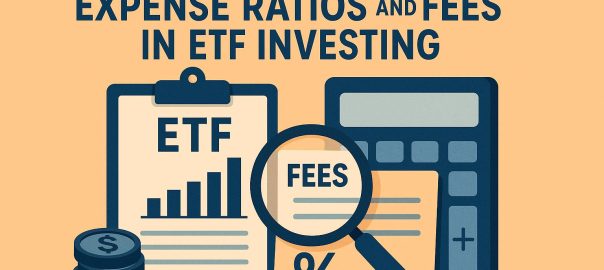Understanding Expense Ratios and Fees in ETF Investing
Investing in Exchange-Traded Funds (ETFs) has become increasingly popular due to the benefits they offer such as diversification and potentially lower costs. Yet, a crucial part of making the most from ETF investments is an understanding of the cost structure that accompanies these financial instruments. Among the cost components that investors need to comprehend are the expense ratio and other related fees associated with ETF investing.
What is an Expense Ratio?
The expense ratio is a term that refers to the financial measurement of the cost required to manage and operate an ETF. Presented as a percentage of the fund’s average net assets, this expense is subtracted from the fund’s returns, directly affecting the investor’s earnings. The components of this ratio include management fees, administrative costs, and other operational expenses, and it serves as a broad gauge of the cost efficiency of an ETF. Generally speaking, a lower expense ratio suggests that a greater portion of the investment’s returns remains with the investor, making it a critical factor to consider when selecting among various ETFs.
Example of an Expense Ratio
To illustrate the impact of an expense ratio on an investment, consider an ETF with an expense ratio of 0.50%. This figure implies that for every $1,000 invested in the fund, $5 is expended annually to cover administrative costs and management fees. Thus, understanding this ratio is crucial as it determines how much of the fund’s returns are consumed by operational costs.
Components of the Expense Ratio
The expense ratio itself is composed of several cost elements:
Management Fees: These fees compensate fund managers for their expertise in investment decisions and their responsibility for handling the ETF’s portfolio. They can vary based on the investment strategy and complexity of the ETF.
Administrative Costs: Administrative expenses involve the essential services required for the smooth function of the ETF. These include tasks such as record-keeping, customer service, and other essential operational needs.
Marketing and Distribution Fees: Sometimes referred to as 12b-1 fees, these are intended to cover marketing and promotional activities aimed at increasing the ETF’s investor base. Importantly, not all ETFs charge these fees, but when they do, it adds to the total expense ratio.
Additional Fees to Consider
While the expense ratio is a key factor in assessing ETF costs, it is not the only cost component that investors should pay attention to. Several other fees can impact the total cost of investing in ETFs.
Brokerage Commissions
Most investors access ETFs through brokerage accounts, potentially incurring transaction fees or commissions. In recent years, many brokerage platforms have moved towards offering lower-cost or even commission-free trades. However, investors need to scrutinize these fees when deciding on where to buy or sell ETFs to ensure that transaction costs remain minimal.
Bid-Ask Spread
Another fee component is the bid-ask spread, which refers to the gap between the highest price a buyer is ready to pay for an ETF and the lowest price at which a seller is willing to sell. This difference can subtly affect the cost of trading ETFs, especially those that are less frequently traded and less liquid. Therefore, investors should take the bid-ask spread into account when calculating the total trade costs.
Comparing Costs Among ETFs
When evaluating potential ETF investments, investors should not only focus on the expense ratio but also consider other fees. While a lower expense ratio is typically more advantageous since it ensures more returns remain with the investor, it is equally important to evaluate the ETF’s overall performance, its investment strategy, and associated fees. This comprehensive analysis aids in making sound investment decisions.
Researching ETFs
Effective ETF research involves using dependable financial sources and analytical tools such as those offered by platforms like Morningstar and Vanguard. These resources provide detailed insights into a fund’s expense ratios and associated fees, helping investors perform a thorough analysis and make more informed investment decisions.
Conclusion
For those entering the realm of ETF investment, a clear understanding of expense ratios and the accompanying fees is vital. Awareness of the elements contributing to these costs coupled with considerations of additional charges ensures informed decision-making. By evaluating these components carefully, investors can position themselves to optimize their ETF investments, aligning their financial strategies with their long-term objectives. Ensuring that fees and costs don’t unnecessarily diminish returns is a strategic approach for achieving success in the dynamic world of ETF investing.
This article was last updated on: September 12, 2025

